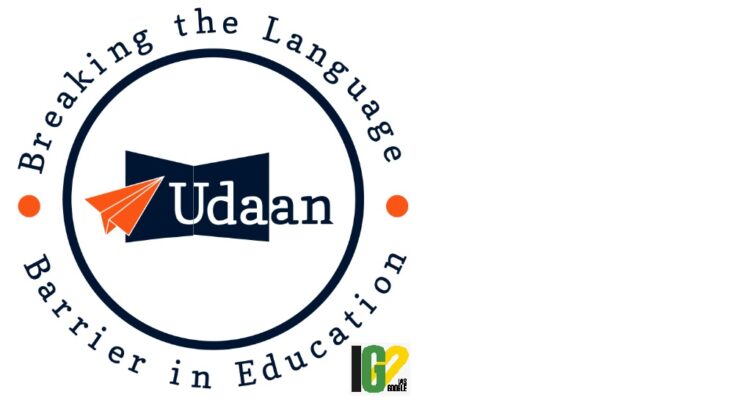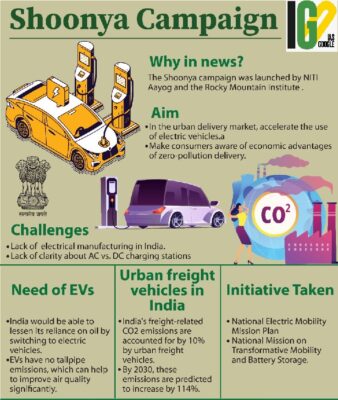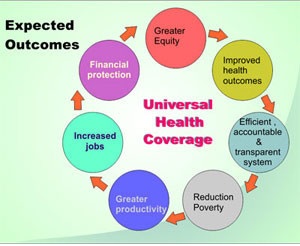- Home
- Prelims
- Mains
- Current Affairs
- Study Materials
- Test Series
 EDITORIALS & ARTICLES
EDITORIALS & ARTICLES
24th Sep 2021
WHAT ARE THE TARBALLS THAT HAVE RESURFACED ON MUMBAI’s BEACHES?
Cuffe Parade shoreline, a district in South Mumbai saw black oil-emanating balls lying on the shore.

 The Indian Institute of Technology, Bombay has launched Project Udaan, which is a language translator to ease students in understanding languages.
The Indian Institute of Technology, Bombay has launched Project Udaan, which is a language translator to ease students in understanding languages.




- Earlier, several beaches in Goa, including Anjuna, were covered with the black sticky carpet.
- The Brihanmumbai Municipal Corporation (BMC) has removed over 20,000 kg of tarballs from Juhu and Versova beaches.

- Tarballs are dark-colored, sticky balls of oil that form when crude oil floats on the ocean surface.
- They are formed by weathering of crude oil in marine environments.
- According to National Institute of Oceanography (NIO), they are transported from the open sea to the shores by sea currents and waves.
- Some of the balls are as big as a basketball while others are smaller globules.
- They are usually coin-sized and found strewn on the beaches.
- The tarballs can stick to the cleaning machinery and are difficult to wash off.
- According to NIO wind and waves tear the oil slick into smaller patches that are scattered over a much wider area.
- Various physical, chemical, and biological processes (weathering) change the appearance of the oil.
- It is examined that the oil comes from the large cargo ships in the deep sea and gets pushed to the shore as tarballs, during monsoon due to wind speed and direction.
- All the oil spilt in the Arabian sea eventually gets deposited on the western coast in the form of tarballs in the monsoon season.
- Australia will acquire nuclear-powered submarines with help from the U.K. and the U.S.
- The nuclear powered submarines will be built in Adelaide, in close cooperation with the U.K. and the U.S.
- 18-month project to deliver the first fleet, would help Australia acquire submarines that are quieter than their conventional counterparts but also more capable of being deployed for longer periods and needing to surface less frequently.
- AUKUS will also involve a new architecture of meetings and engagements between the three countries, as well as cooperation across emerging technologies (applied AI, quantum technologies and undersea capabilities).
- The initiative is in response Australia wanting to step up its game with regard to maritime security in the Indo-Pacific region.
- The partnership was also a “down-payment” the U.K. was making on its decision to engage more deeply with the Indo-Pacific.
- The partnership was a fundamental decision that binds, decisively, Australia to the United States and Great Britain for generations.
- Tensions have been high between Australia and an increasingly assertive China, its largest trade partner.
- Australia banned Chinese telecom giant Huawei in 2018 and also called for an investigation into the origins of COVID-19.
- China retaliated by imposing tariffs on or capping Australian exports.
- The U.S. sharing this kind of technology on nuclear powered submarines had been done only once before with the U.K. in 1958.
 The Indian Institute of Technology, Bombay has launched Project Udaan, which is a language translator to ease students in understanding languages.
The Indian Institute of Technology, Bombay has launched Project Udaan, which is a language translator to ease students in understanding languages.
- It is an end-to-end ecosystem, which translates scientific and technical content from English to Hindi and all other Indian languages.
- The AI-based translation software ecosystem can translate engineering textbooks, learning materials.
- The Project aims to translate 500 engineering texts in Hindi in one year and in 15 Indian languages in 3 years.

- It is named as Strophodusjaisalmerensis.
- The genus Strophodus has been identified for the first time from the Indian subcontinent and is only the third such record from Asia, the other two being from Japan and Thailand.
- The new species has been included in the Shark references.com, an international platform operating in association with International Union for Conservation of Nature (IUCN), Species Survival Commission (SSC), and Germany.
- Hybodonts, an extinct group of sharks, was a dominant group of fishes in both marine and fluvial environments during the Triassic and early Jurassic time.
- Hybodont sharks started to decline in marine environments from the Middle Jurassic onwards until they formed a relatively minor component of open-marine shark assemblages.
- Hybodonts finally became extinct at the end of the Cretaceous time 65 million years ago.

- Aim: To accelerate adoption of electric vehicles (EVs) in the urban deliveries segment and create consumer awareness about the benefits of zero-pollution delivery.
- As part of the campaign, a corporate branding and certification programme is being launched to recognise and promote industry’s efforts towards transitioning to EVs for final-mile deliveries.
- An online tracking platform will share the campaign’s impact through data such as vehicle kilometers electrified, carbon savings, criteria pollutant savings and other benefits from clean delivery vehicles.
- EVs emit no tailpipe emissions, which can contribute immensely to an improved air quality.
- They emit 15-40 percent less CO2 in their manufacturing compared to their internal combustion engine counterparts and have lower operational cost.
- Urban freight vehicles account for 10 percent of freight transportation-related CO2 emissions in India, and these emissions are expected to grow by 114 percent by 2030.
- It has reached theoretical transparency through a technique called colloidal processing followed by simultaneous application of temperature and pressure.
- Researchers have produced magnesium aluminate spinel ceramics with colloidal processing followed by HIP technique which involves the simultaneous application of temperature and pressure.
- Chemical Vapour Deposition (CVD) involving reactions of the precursors in the vapor phase at elevated temperatures and Hot Isostatic Pressing (HIP) involving simultaneous application of temperature and pressure are a few advanced processing techniques generally practiced to get transparent ceramics.
- Spinel is currently emerging as a transparent ceramic based on the outstanding optical properties of transmission– more than 75 % in the visible and more than 80% in the infrared range.
- It also has higher strength of 200 megapascal and hardness of more than 13 Gigapascal.
- The material can be used for thermal imaging applications, especially in harsh service conditions and personal protection systems such as, helmets, face shields, and goggles.
- Transparent ceramics is a new class of advanced materials with unique transparency and excellent mechanical properties.
- These materials can be designed not only for transparent to visible light but also for ultraviolet (UV), Infrared (IR), and Radiofrequency (RF), giving opportunity for diverse applications
- Though produced by different countries globally, transparent ceramics are restricted in supply as they can be used for strategic applications.

- Joint Counter Terrorism Exercise PEACEFUL MISSION is a Multilateral Exercise, conducted as part of military diplomacy between Shanghai Cooperation Organisation (SCO) member states.
- The aim of the exercise is to foster close relations between SCO member states and to enhance abilities of the military leaders to command multi-national military contingents.
- It will provide an opportunity to the Armed Forces of SCO Nations to train in Counter-Terrorism Operations in an urban scenario in a multinational and joint environment.
- The scope includes professional interaction, mutual understanding of drills procedures, establishment of joint command & control structures and elimination of terrorist threats.
- Military contingent of all arms combined force of 200 personnel with 38 personnel from the Indian Air Force will participate in the exercise including two IL-76 aircrafts.
- Females in India can on average expect to live just over 60 years of a healthy life unhampered by disabling illness or injuries.
- It is the lowest healthy life expectancy among 11 countries in the World Health Organisation's South East Asia region.
- For men, there are just two countries in this region, Timor-Leste and Myanmar, that are worse off in terms of healthy life expectancy.
- The mortality rate of children under five years is the highest in Timor-Leste and Myanmar being again even worse off than India.
- In the countries with the best performance in the region, Sri Lanka, Thailand and Maldives.
- Health expenditure as a share of total government expenditure is among the highest in the region.
- Estimated share of spending on health in total government spending is the lowest in India (3.4%), Bangladesh (3%) and Myanmar (3.5).
- Consequently, in these three countries, out-of-pocket expenditure, that is people spending from their own savings constitutes between 63% in India and 76% in Myanmar compared to just 11% in Thailand.
- Bangladesh and India also have the highest proportion of their population, 7% and 4.2% respectively, being pushed into poverty because of having to spend on healthcare.
- They also have the highest proportions of people who spent more than 10% of their household's total expenditure on healthcare, a situation that is described as catastrophic health expenditure.
- Almost a quarter of the population in Bangladesh and over 17% in India are estimated to face catastrophic expenditure due to healthcare.
- Some people were able to "live healthier lives and have better access to health services than others - entirely due to the conditions in which they are born, grow, live, work and age.

- Universal health coverage (UHC) ensures all people, everywhere, can access the quality health services they need without suffering financial hardship.
- It is a fundamentally political goal rooted in the human right to health.
- On 12 December 2017, the United Nations proclaimed 12 December as International Universal Health Coverage Day (UHC Day) by resolution 72/138.
- UHC strategies enable everyone to access the services that address the most significant causes of disease and death and ensures that the quality of those services is good enough to improve the health of the people who receive them.
- Achieving UHC will accelerate efforts to end extreme poverty, reduce burdens of infectious and noncommunicable diseases, promote economic growth and job creation, achieve gender equality and realize all Sustainable Development Goals.









 Latest News
Latest News General Studies
General Studies